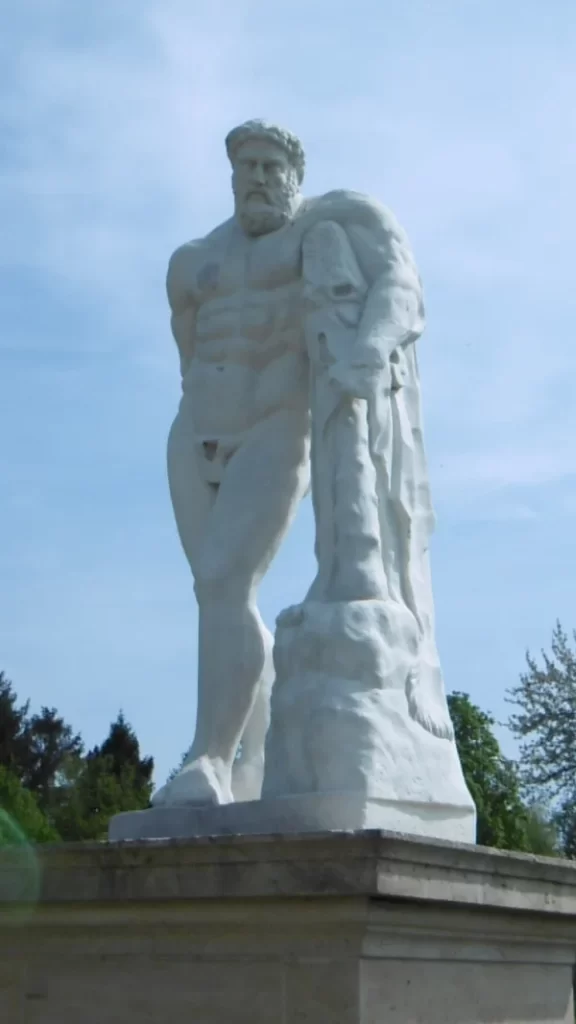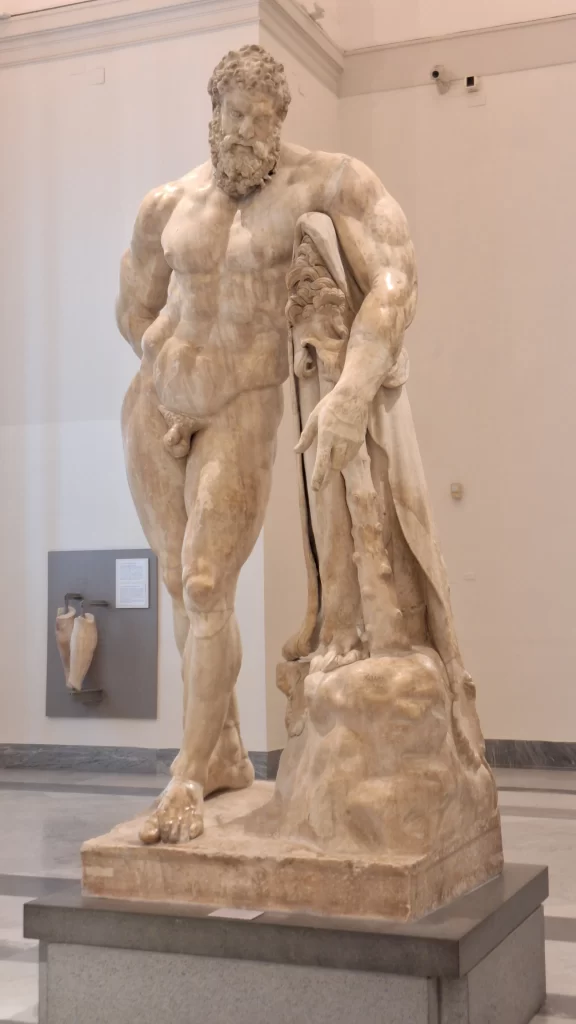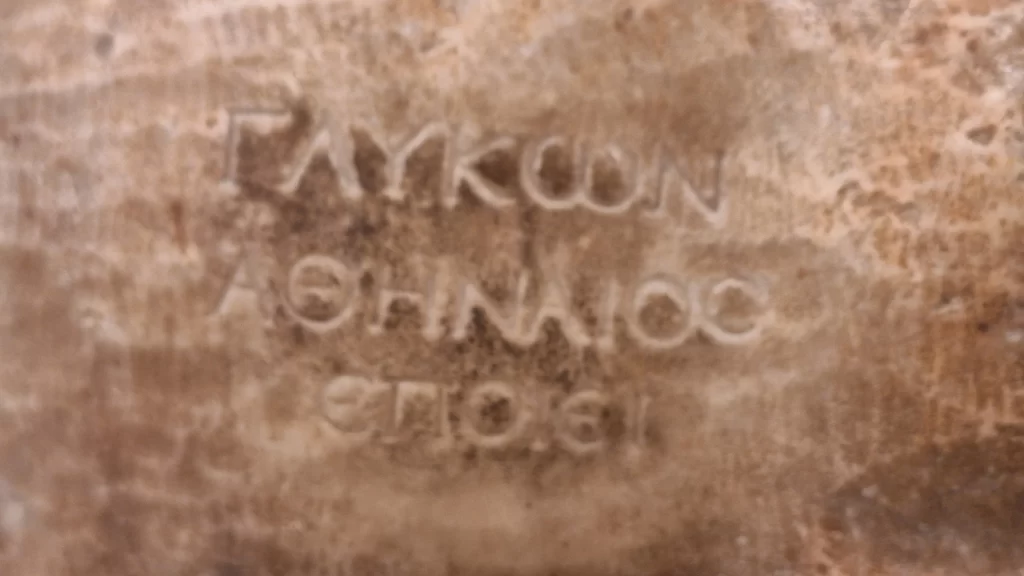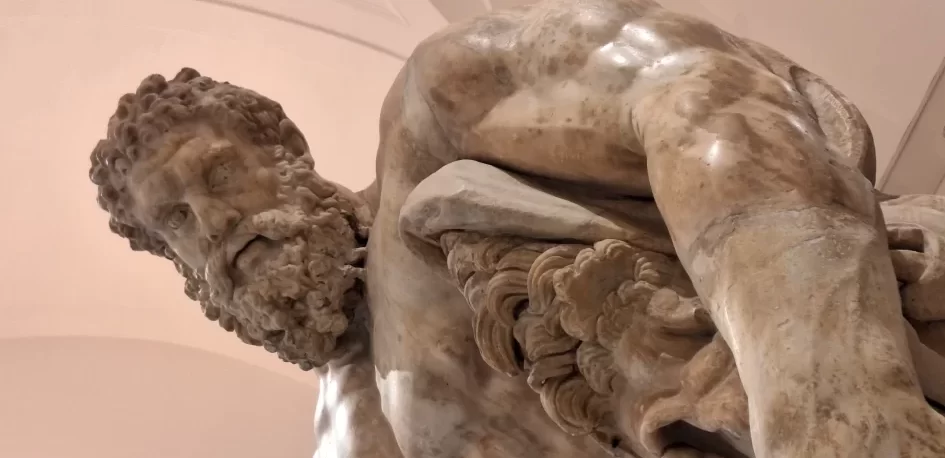I mentioned in “Farnese Hercules” that Comino copied Glykon’s copy of Hercules at rest. Glykon’s copy, made from Lysippus’s bronze original, now resides at the Museo Archeologico Nazionale in Naples. After exploring the excavated remains of a 1st-century Roman city buried by volcanic eruption, I made a quick jaunt up the coast to see Glykon’s work for myself.
In the early 3rd century, Roman Emperor Septimus Severus began construction on a large bath complex in Rome. After his death, his son and successor Marcus Aurelius Antoninus completed the baths, which took the son’s nickname Caracalla. A great many sculptures decorated the Baths of Caracalla. Up to eight thousand people a day enjoyed the heated water, free for public use, for three centuries.
The Western Roman Empire fell by the end of the 5th century. During a siege of Rome in 537, the Ostrogoths severed the city’s water supply. The baths, far from the city’s still populated area, were abandoned. The bath building was further destroyed in an earthquake 300 years later.
By the 16th century, the former baths had been used as a quarry, vineyards, gardens, and a burial ground. In 1545, Pope Paul III Farnese needed stone for an urban palace he was constructing nearby. He hoped also to recover a few artifacts for his burgeoning collection of ancient art. Excavators recovered so many objects—Glykon’s Hercules among them—the Pope created a museum to house them all.
The Pope’s collection would be handed down to his grandson. Cardinal Alessandro Farnese also collected artwork. In addition to much received through inheritance, he collected other works and was a patron to contemporary artists. What became known as the Farnese Collection now includes statues, paintings, coins and medals, manuscripts and illuminations, and engraved gems.
Most of the collection is found today in Naples: the paintings at the Museo di Capodimonte, the sculptures at the Museo Archeologico Nazionale.


The Farnese Hercules in the gardens at the Château de Sceaux (left) was made from a mold of Glykon’s copy (right) in 2010. It misses a few appendages. Glykon’s reveals the hero in all his glory.

